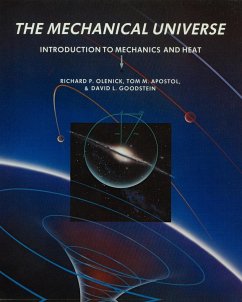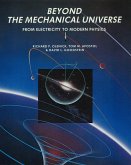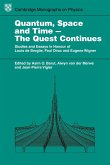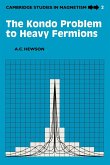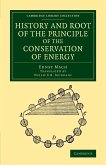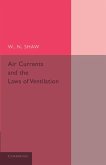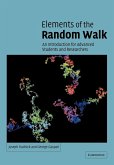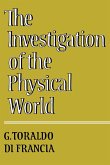Richard P. Olenick, Tom M. Apostol, David L. Goodstein
The Mechanical Universe
Introduction to Mechanics and Heat
Richard P. Olenick, Tom M. Apostol, David L. Goodstein
The Mechanical Universe
Introduction to Mechanics and Heat
- Broschiertes Buch
- Merkliste
- Auf die Merkliste
- Bewerten Bewerten
- Teilen
- Produkt teilen
- Produkterinnerung
- Produkterinnerung
This book studies electricity and magnetism, light, the special theory of relativity, and modern physics.
Andere Kunden interessierten sich auch für
![Beyond the Mechanical Universe Beyond the Mechanical Universe]() Richard P. OlenickBeyond the Mechanical Universe95,99 €
Richard P. OlenickBeyond the Mechanical Universe95,99 €![Quantum Space and Time - The Quest Continues Quantum Space and Time - The Quest Continues]() BarutQuantum Space and Time - The Quest Continues65,99 €
BarutQuantum Space and Time - The Quest Continues65,99 €![The Kondo Problem to Heavy Fermions The Kondo Problem to Heavy Fermions]() A. C. HewsonThe Kondo Problem to Heavy Fermions89,99 €
A. C. HewsonThe Kondo Problem to Heavy Fermions89,99 €![History and Root of the Principle of the Conservation of Energy History and Root of the Principle of the Conservation of Energy]() Ernst MachHistory and Root of the Principle of the Conservation of Energy31,99 €
Ernst MachHistory and Root of the Principle of the Conservation of Energy31,99 €![Air Currents and the Laws of Ventilation Air Currents and the Laws of Ventilation]() W. N. ShawAir Currents and the Laws of Ventilation31,99 €
W. N. ShawAir Currents and the Laws of Ventilation31,99 €![Elements of the Random Walk Elements of the Random Walk]() Joseph RudnickElements of the Random Walk70,99 €
Joseph RudnickElements of the Random Walk70,99 €![The Investigation of the Physical World The Investigation of the Physical World]() G. Toraldo Di FranciaThe Investigation of the Physical World59,99 €
G. Toraldo Di FranciaThe Investigation of the Physical World59,99 €-
-
-
This book studies electricity and magnetism, light, the special theory of relativity, and modern physics.
Hinweis: Dieser Artikel kann nur an eine deutsche Lieferadresse ausgeliefert werden.
Hinweis: Dieser Artikel kann nur an eine deutsche Lieferadresse ausgeliefert werden.
Produktdetails
- Produktdetails
- Verlag: Cambridge University Press
- Seitenzahl: 604
- Erscheinungstermin: 1. Januar 2008
- Englisch
- Abmessung: 254mm x 203mm x 32mm
- Gewicht: 1276g
- ISBN-13: 9780521715928
- ISBN-10: 052171592X
- Artikelnr.: 23527068
- Herstellerkennzeichnung
- Libri GmbH
- Europaallee 1
- 36244 Bad Hersfeld
- gpsr@libri.de
- Verlag: Cambridge University Press
- Seitenzahl: 604
- Erscheinungstermin: 1. Januar 2008
- Englisch
- Abmessung: 254mm x 203mm x 32mm
- Gewicht: 1276g
- ISBN-13: 9780521715928
- ISBN-10: 052171592X
- Artikelnr.: 23527068
- Herstellerkennzeichnung
- Libri GmbH
- Europaallee 1
- 36244 Bad Hersfeld
- gpsr@libri.de
Richard P. Olenick is currently the chair of Department of Physics at University of Dallas. He was Associate Project Director of the PBS Series The Mechanical Universe and Beyond the Mechanical Universe, which accompanied this textbook and its successors. He has received numerous grants from the National Science Foundation and the US Department of Education for his work in physics education. His current project is C3P, which developed an inquiry-based curriculum for high school physics. In 1995, Dr Olenick was named Texas Professor of the Year by the Carnegie Foundation and in 1997, he was named a Minnie Piper Steven Professor. In 2003, he became the Nancy Cain Marcus and Jeffrey A. Marcus Chair in Science and in 2005 he received the King Award from the University of Dallas, which is the highest honor the University can bestow on a faculty member.
Preface
1. Introduction to the mechanical universe
2. The law of falling bodies
3. Derivatives
4. Inertia
5. Vectors
6. Newton's law
7. Integration
8. The apple and the moon
9. Moving in circles
10. Forces
11. Gravity, electricity, and magnetism
12. The Milliken oil-drop experiment
13. The law of conservation of energy
14. Energy and stability
15. Temperature and the gas laws
16. The engine of nature
17. Entropy
18. The quest for low temperatures
19. The conservation of momentum
20. Harmonic motion
21. Resonance
22. Coupled oscillators and waves
23. Angular momentum
24. Gyroscopes
25. Kepler's laws and the conic sections
26. Solving the Kepler problem
27. Energy and eccentricity
28. Navigating in space
29. Loose ends and black holes
30. The harmony of the spheres: an overview of the mechanical universe
Appendix A. The international system of units
Appendix B. Conversion factors
Appendix C. Formulas from algebra, geometry, and trigonometry
Appendix D. Astronomical data
Appendix E. Physical constants
Selected bibliography
Index.
1. Introduction to the mechanical universe
2. The law of falling bodies
3. Derivatives
4. Inertia
5. Vectors
6. Newton's law
7. Integration
8. The apple and the moon
9. Moving in circles
10. Forces
11. Gravity, electricity, and magnetism
12. The Milliken oil-drop experiment
13. The law of conservation of energy
14. Energy and stability
15. Temperature and the gas laws
16. The engine of nature
17. Entropy
18. The quest for low temperatures
19. The conservation of momentum
20. Harmonic motion
21. Resonance
22. Coupled oscillators and waves
23. Angular momentum
24. Gyroscopes
25. Kepler's laws and the conic sections
26. Solving the Kepler problem
27. Energy and eccentricity
28. Navigating in space
29. Loose ends and black holes
30. The harmony of the spheres: an overview of the mechanical universe
Appendix A. The international system of units
Appendix B. Conversion factors
Appendix C. Formulas from algebra, geometry, and trigonometry
Appendix D. Astronomical data
Appendix E. Physical constants
Selected bibliography
Index.
Preface
1. Introduction to the mechanical universe
2. The law of falling bodies
3. Derivatives
4. Inertia
5. Vectors
6. Newton's law
7. Integration
8. The apple and the moon
9. Moving in circles
10. Forces
11. Gravity, electricity, and magnetism
12. The Milliken oil-drop experiment
13. The law of conservation of energy
14. Energy and stability
15. Temperature and the gas laws
16. The engine of nature
17. Entropy
18. The quest for low temperatures
19. The conservation of momentum
20. Harmonic motion
21. Resonance
22. Coupled oscillators and waves
23. Angular momentum
24. Gyroscopes
25. Kepler's laws and the conic sections
26. Solving the Kepler problem
27. Energy and eccentricity
28. Navigating in space
29. Loose ends and black holes
30. The harmony of the spheres: an overview of the mechanical universe
Appendix A. The international system of units
Appendix B. Conversion factors
Appendix C. Formulas from algebra, geometry, and trigonometry
Appendix D. Astronomical data
Appendix E. Physical constants
Selected bibliography
Index.
1. Introduction to the mechanical universe
2. The law of falling bodies
3. Derivatives
4. Inertia
5. Vectors
6. Newton's law
7. Integration
8. The apple and the moon
9. Moving in circles
10. Forces
11. Gravity, electricity, and magnetism
12. The Milliken oil-drop experiment
13. The law of conservation of energy
14. Energy and stability
15. Temperature and the gas laws
16. The engine of nature
17. Entropy
18. The quest for low temperatures
19. The conservation of momentum
20. Harmonic motion
21. Resonance
22. Coupled oscillators and waves
23. Angular momentum
24. Gyroscopes
25. Kepler's laws and the conic sections
26. Solving the Kepler problem
27. Energy and eccentricity
28. Navigating in space
29. Loose ends and black holes
30. The harmony of the spheres: an overview of the mechanical universe
Appendix A. The international system of units
Appendix B. Conversion factors
Appendix C. Formulas from algebra, geometry, and trigonometry
Appendix D. Astronomical data
Appendix E. Physical constants
Selected bibliography
Index.

